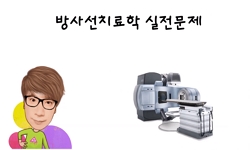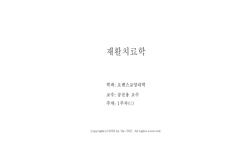소아 족관절 골절은 경비골 원위부의 골간단, 성장판 및 골단에 대한 손상으로 정의된다. 소아 족관절 골절은 손상 기전이 성인과 유사하다고 하더라도 골단판이 경골과 비골의 원위부에 위...
http://chineseinput.net/에서 pinyin(병음)방식으로 중국어를 변환할 수 있습니다.
변환된 중국어를 복사하여 사용하시면 됩니다.
- 中文 을 입력하시려면 zhongwen을 입력하시고 space를누르시면됩니다.
- 北京 을 입력하시려면 beijing을 입력하시고 space를 누르시면 됩니다.
https://www.riss.kr/link?id=A107385656
- 저자
- 발행기관
- 학술지명
- 권호사항
-
발행연도
2021
-
작성언어
-
-
주제어
Ankle ; Pediatric fracture ; Classification ; Treatment ; Complication ; 족관절 ; 소아 골절 ; 분류 ; 치료 ; 합병증
-
등재정보
KCI등재
-
자료형태
학술저널
- 발행기관 URL
-
수록면
87-95(9쪽)
-
KCI 피인용횟수
0
- DOI식별코드
- 제공처
- 소장기관
-
0
상세조회 -
0
다운로드
부가정보
국문 초록 (Abstract)
소아 족관절 골절은 경비골 원위부의 골간단, 성장판 및 골단에 대한 손상으로 정의된다. 소아 족관절 골절은 손상 기전이 성인과 유사하다고 하더라도 골단판이 경골과 비골의 원위부에 위치하기 때문에 골절의 형태뿐만 아니라 치료 방법이 성인과 다르다. 소아의 인대는 성장판 연골보다 강해서, 성인에서 염좌를 일으킬 정도의 부하가 소아에서는 주로 성장판 골절을 일으키고, 사춘기에는 원위 경골 성장판의 폐쇄가 진행되는 동안 이행기 골절이 발생된다. 진단을 위해서는 방사선 검사가 필수적이고 인대 손상이 의심될 때에는 스트레스 사진이나 초음파, 자기공명영상 촬영이 사용될 수 있다. 치료의 목표는 관절면 일치(articular congruity)와 골 정렬을 회복하여 기능을 보존할 뿐만 아니라 골단판을 보호, 유지시키는 것이다. 성장판 골절은 해부학적 정복 후에도 조기 성장판 폐쇄가 흔하게 발생하고 각변형과 부정유합, 수상 후 관절염 등의 합병증이 발생할 수 있어 이에 대한 보호자 설명과 장기 추시가 필수적이다.
다국어 초록 (Multilingual Abstract)
Pediatric ankle fractures are defined as damage to the metaphysis, epiphyseal plate, and epiphysis of the distal tibia and fibula. Although the injury mechanism could be similar, the fracture patterns and treatment of pediatric ankle fractures are dif...
Pediatric ankle fractures are defined as damage to the metaphysis, epiphyseal plate, and epiphysis of the distal tibia and fibula. Although the injury mechanism could be similar, the fracture patterns and treatment of pediatric ankle fractures are different from those of adults. In children, growth plate injuries are more common with a force that would cause sprains in adults because the ligaments are stronger than the growth plate cartilage in children. In the adolescent period, unique fractures, called “transitional fractures”, occur while the physis is closed. For a diagnosis, plain images of the anteroposterior, lateral, and mortise views are essential. Stress radiographs, ultrasound, and magnetic resonance imaging can be used for suspected ligament injuries. The treatment goal is to restore the articular congruity, normal bony alignment, and preserve the epiphyseal plate to ensure normal growth. Pediatric ankle fractures frequently lead to premature physeal arrest, angular deformities, malunion, and post-traumatic arthritis even after anatomic reduction. Treating surgeons should follow-up children for a sufficient time and explain to the caregiver the possible complications before treatment.
참고문헌 (Reference)
1 Healy WA 3rd, "Triplane fracture associated with a proximal third fibula fracture" 25 : 449-451, 1996
2 Langenskiöld A, "Traumatic premature closure of the distal tibial epiphyseal plate" 38 : 520-531, 1967
3 Cooperman DR, "Tibial fractures involving the ankle in children. The so-called triplane epiphyseal fracture" 60 : 1040-1046, 1978
4 Kärrholm J, "The triplane fracture: four years of follow-up of 21cases and review of the literature" 6 : 91-102, 1997
5 Chadwick CJ, "The classification and prognosis of epiphyseal injuries" 18 : 157-168, 1987
6 Hasler CC, "Secondary tethers after physeal bar resection: a common source of failure?" (405) : 242-249, 2002
7 Rohmiller MT, "SalterHarris I and II fractures of the distal tibia: does mechanism of injury relate to premature physeal closure?" 26 : 322-328, 2006
8 Cass JR, "Salter-Harris Type-IV injuries of the distal tibial epiphyseal growth plate, with emphasis on those involving the medial malleolus" 65 : 1059-1070, 1983
9 Russo F, "Salter-Harris II fractures of the distal tibia: does surgical management reduce the risk of premature physeal closure?" 33 : 524-529, 2013
10 Boutis K, "Radiograph-negative lateral ankle injuries in children: occult growth plate fracture or sprain?" 170 : e154114-, 2016
1 Healy WA 3rd, "Triplane fracture associated with a proximal third fibula fracture" 25 : 449-451, 1996
2 Langenskiöld A, "Traumatic premature closure of the distal tibial epiphyseal plate" 38 : 520-531, 1967
3 Cooperman DR, "Tibial fractures involving the ankle in children. The so-called triplane epiphyseal fracture" 60 : 1040-1046, 1978
4 Kärrholm J, "The triplane fracture: four years of follow-up of 21cases and review of the literature" 6 : 91-102, 1997
5 Chadwick CJ, "The classification and prognosis of epiphyseal injuries" 18 : 157-168, 1987
6 Hasler CC, "Secondary tethers after physeal bar resection: a common source of failure?" (405) : 242-249, 2002
7 Rohmiller MT, "SalterHarris I and II fractures of the distal tibia: does mechanism of injury relate to premature physeal closure?" 26 : 322-328, 2006
8 Cass JR, "Salter-Harris Type-IV injuries of the distal tibial epiphyseal growth plate, with emphasis on those involving the medial malleolus" 65 : 1059-1070, 1983
9 Russo F, "Salter-Harris II fractures of the distal tibia: does surgical management reduce the risk of premature physeal closure?" 33 : 524-529, 2013
10 Boutis K, "Radiograph-negative lateral ankle injuries in children: occult growth plate fracture or sprain?" 170 : e154114-, 2016
11 Biswas D, "Radiation exposure from musculoskeletal computerized tomographic scans" 91 : 1882-1889, 2009
12 Barmada A, "Premature physeal closure following distal tibia physeal fractures: a new radiographic predictor" 23 : 733-739, 2003
13 Dias LS, "Physeal injuries of the ankle in children:classification" (136) : 230-233, 1978
14 Leary JT, "Physeal fractures of the distal tibia: predictive factors of premature physeal closure and growth arrest" 29 : 356-361, 2009
15 Eismann EA, "Pediatric triplane ankle fractures: impact of radiographs and computed tomography on fracture classification and treatment planning" 97 : 995-1002, 2015
16 Su AW, "Pediatric ankle fractures: concepts and treatment principles" 20 : 705-719, 2015
17 Olgun ZD, "Management of pediatric ankle fractures" 11 : 475-484, 2018
18 Caterini R, "Long-term followup of physeal injury to the ankle" 11 : 372-383, 1991
19 Ogden JA, "Injury to the growth mechanisms of the immature skeleton" 6 : 237-253, 1981
20 Salter RB, "Injuries involving the epiphyseal plate" 45 : 587-622, 1963
21 Mac Nealy GA, "Inju-ries of the distal tibial epiphysis: systematic radiographic evaluation" 138 : 683-689, 1982
22 Aitken AP, "Fractures of the epiphyses" 41 : 19-23, 1965
23 Spiegel PG, "Epiphyseal fractures of the distal ends of the tibia and fibula. A retrospective study of two hundred and thirty-seven cases in children" 60 : 1046-1050, 1978
24 Rapariz JM, "Distal tibial triplane fractures: long-term follow-up" 16 : 113-118, 1996
25 Kling TF Jr, "Distal tibial physeal fractures in children that may require open reduction" 66 : 647-657, 1984
26 de Sanctis N, "Distal tibial and fibular epiphyseal fractures in children: prognostic criteria and long-term results in 158 patients" 9 : 40-44, 2000
27 Denning JR, "Complications of pediatric foot and ankle fractures" 48 : 59-70, 2017
28 Gill JB, "Comparison of manual and gravity stress radiographs for the evaluation of supination-external rotation fibular fractures" 89 : 994-999, 2007
29 von Laer L, "Classification, diagnosis, and treatment of transitional fractures of the distal part of the tibia" 67 : 687-698, 1985
30 Vahvanen V, "Classification of ankle fractures in children" 97 : 1-5, 1980
31 Lyons RA, "Children’s fractures:a population based study" 5 : 129-132, 1999
32 Landin LA, "Children’s ankle fractures. Classification and epidemiology" 54 : 634-640, 1983
33 Tarr RR, "Changes in tibiotalar joint contact areas following experimentally induced tibial angular deformities" (199) : 72-80, 1985
34 Blackburn EW, "Ankle fractures in children" 94 : 1234-1244, 2012
35 Peterson CA, "Analysis of the incidence of injuries to the epiphyseal growth plate" 12 : 275-281, 1972
36 Jones S, "Accuracy of point-of-care ultrasonography for pediatric ankle sprain injuries" 34 : 842-847, 2018
동일학술지(권/호) 다른 논문
-
골수강내 금속정을 시행한 대퇴골 전자간 골절의 좌, 우측에서 근위부 정복 비교
- 대한골절학회
- 오현철 ( Hyun Cheol Oh )
- 2021
- KCI등재
-
대퇴골 전자간 골절 환자에서 날카로운 면을 가진 소전자의 전위에 의한 외측 대퇴 회선 동맥 상향 분지의 손상 - 증례 보고 -
- 대한골절학회
- 허순호 ( Soon Ho Huh )
- 2021
- KCI등재
-
전자간 골절 수술 후 소전자의 전위로 발생한 심부 대퇴동맥의 지연성 가성 동맥류 - 증례 보고 -
- 대한골절학회
- 김범수 ( Bum-soo Kim )
- 2021
- KCI등재
-
- 대한골절학회
- 김기훈 ( Gihun Kim )
- 2021
- KCI등재
분석정보
인용정보 인용지수 설명보기
학술지 이력
| 연월일 | 이력구분 | 이력상세 | 등재구분 |
|---|---|---|---|
| 2027 | 평가예정 | 재인증평가 신청대상 (재인증) | |
| 2021-01-01 | 평가 | 등재학술지 유지 (재인증) |  |
| 2018-01-01 | 평가 | 등재학술지 유지 (등재유지) |  |
| 2015-01-01 | 평가 | 등재학술지 유지 (등재유지) |  |
| 2014-01-08 | 학술지명변경 | 외국어명 : 미등록 -> Journal of the Korean Fracture Society |  |
| 2011-01-01 | 평가 | 등재학술지 유지 (등재유지) |  |
| 2008-01-01 | 평가 | 등재학술지 선정 (등재후보2차) |  |
| 2007-01-01 | 평가 | 등재후보 1차 PASS (등재후보1차) |  |
| 2006-07-21 | 학회명변경 | 영문명 : The Journal Of The Korean Society -> The Korean Fracture Society |  |
| 2006-01-01 | 평가 | 등재후보 1차 FAIL (등재후보2차) |  |
| 2005-05-30 | 학술지등록 | 한글명 : 대한골절학회지외국어명 : 미등록 |  |
| 2005-01-01 | 평가 | 등재후보 1차 PASS (등재후보1차) |  |
| 2003-07-01 | 평가 | 등재후보학술지 선정 (신규평가) |  |
학술지 인용정보
| 기준연도 | WOS-KCI 통합IF(2년) | KCIF(2년) | KCIF(3년) |
|---|---|---|---|
| 2016 | 0.05 | 0.05 | 0.04 |
| KCIF(4년) | KCIF(5년) | 중심성지수(3년) | 즉시성지수 |
| 0.05 | 0.05 | 0.217 | 0 |





 KISS
KISS







